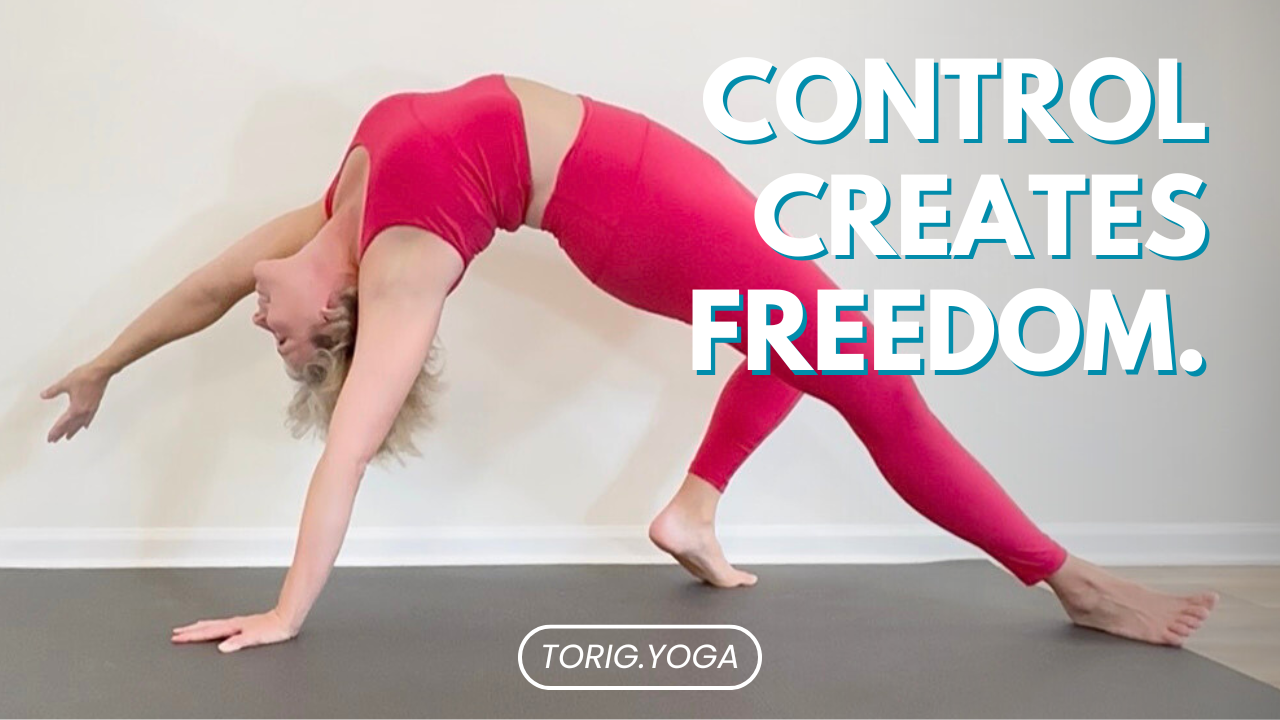
Flexibility vs. Mobility in Yoga: What You Need to Know
Nov 24, 2025Most yoga students think they need to become more flexible to advance their practice.
But here’s the truth almost nobody talks about:
Muscles aren’t “flexible." They contract and relax.
What you call flexibility is your nervous system’s willingness to let you access the range of motion you’re already built with.
And once you understand this, yoga stops feeling like a battle with your tight spots… and starts feeling like a skill you can develop.
Let’s break this down in a clear, yoga-centered way because this isn’t physical therapy, and it’s not fitness.
This is yoga. And yoga uses the whole system.
First: Flexibility Isn’t What You Think It Is
Flexibility isn’t a muscle trait.
It’s not something you “gain” by pulling or forcing.
You’re born with your passive range of motion... the potential your body has based on joints, bone structure, and connective tissue.
So why are there some days you feel open and others feel restricted?
Because flexibility is largely controlled by:
-
your nervous system
-
your joint stability
-
your movement patterns
-
your breath
-
how safe and supported your body feels in the shape of the yoga pose
When you fold forward, your hamstrings aren’t becoming longer. They’re allowing length because the muscles on the opposite side (your hip flexors and quads) are contracting and your nervous system isn’t stepping in to stop you.
That’s the real key:
You don’t stretch muscles; you influence your system.
Mobility: The Missing Link Most Yogis Overlook
If flexibility is your passive range of motion, mobility is your active control of that range.
Mobility is the part people actually need more of in yoga... especially as they move toward deeper backbends, balances, twists, arm balances, and inversions.
Mobility is:
-
strength
-
stability
-
joint organization
-
motor control
-
awareness
-
breath-directed movement
It’s what lets you move into a shape with intention
and move out of a shape without collapsing.
Mobility is the difference between:
-
dropping into a backbend vs lifting into it with your muscles supporting the movement
-
forcing a hamstring stretch vs hinging from your hips with control
-
kicking into Headstand vs placing your body there with precision
Mobility is what makes your yoga practice sustainable.
Why You Feel “Tight” (And It Has Nothing to Do With Needing to Stretch More)
When students say, “I feel tight,” what they’re usually feeling is their body putting on the brakes because it doesn’t feel fully supported in the position, or shape, of the posture yet.
So it restricts.
You don’t need to become bendier. You need to become more stable and more organized.
Once your system feels supported, the range of motion becomes available.
This is why so many students suddenly “unlock” poses in my classes. Not because their muscles got more flexible, but because they finally built:
-
core integration
-
pelvic stability
-
upper back strength
-
better breathing patterns
-
smarter transitions
-
confidence in the shape
Your body gives you more when it feels safer.
Yoga Improves Flexibility Differently Than Stretching
Traditional stretching tries to lengthen a muscle. Yoga teaches you to coordinate your whole body.
That’s why flexibility improves naturally in a yoga practice that includes:
-
strength in the complementary muscles
-
breath that quiets the protective "tightening" reflex
-
stability around the joints
-
repeated patterns that feel familiar
-
slow, intentional movement
-
engagement in the end ranges of motion
-
poses that activate and release at the same time
Flexibility is not passive. It’s intelligent.
And yoga is one of the most effective ways to build it, not because you’re “stretching,” but because you’re training your entire system.
Real Examples: How This Looks in Your Practice
Forward Fold
You don’t “stretch” your hamstrings.
Your hip flexors contract, your pelvis organizes, and your nervous system stops slamming on the brakes.
Backbends
You don’t force your front body open.
You create stability in the legs, glutes, and upper back and that stability gives you access to a bigger lift of the ribcage away from your hips and more space across your front line so you can backbend.
Flexibility supports the posture.
Mobility gets you into the posture.
The Takeaway: You Can Improve Flexibility
But, not by stretching endlessly and hoping it improves.
You improve flexibility by improving:
-
motor control
-
joint stability
-
the strength of opposing muscles
-
your body’s sense of safety
-
the way you breathe
-
the way you organize your movement
This is why your practice gets better with age. Because you become more skilled, more aware, and more connected to what your body needs.
Flexibility doesn’t decline naturally. It declines when you stop moving well. And it improves the moment you start training your body with intention.
This Is Exactly What We Do Inside the Tori G. Yoga Online Studio
My students aren’t getting “more flexible” because they’re stretching more.
They’re gaining access to shapes because they’re learning:
-
smarter alignment
-
stronger foundational patterns
-
better breath
-
more stability
-
more control
-
more confidence
They’re learning how their bodies work and that’s what creates transformation.
If you want a yoga practice that actually teaches you something… that builds your strength, mobility, and confidence in a sustainable way and gives you access to poses you’ve been working toward for years…
Come join me inside the Tori G. Yoga Online Studio.
Your first month is only $37. Your practice (and the 85-year old version of you) will thank you.



